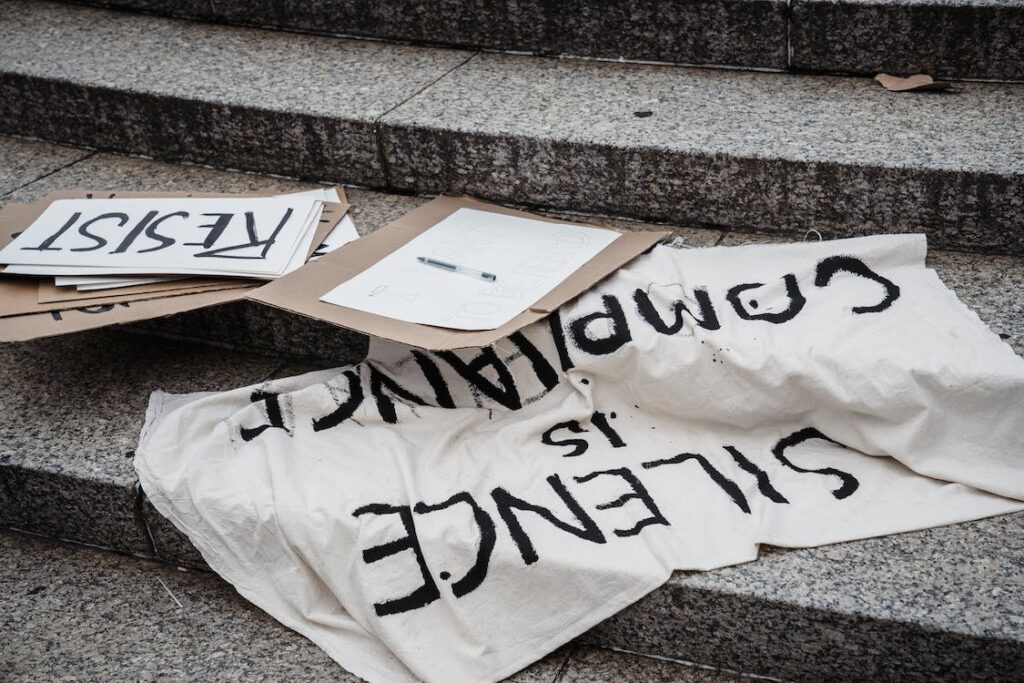The 148-day-long union action by the Writers Guild of America has finally drawn to a close following a tentative agreement with the Alliance of Motion Picture and Television Producers. The agreement is described as a historic win by a worker’s union, especially in today’s day and age of neo-capitalism. The tentative agreements reached as a result of this labour stoppage are also expected to inform the SAG-AFTRA strike – the association of actors in America, which are also striking in dispute with Hollywood executives. The Writers Guild’s strike garnered international media attention as the absence of screenwriters and scriptwriters made itself known in the entertainment industry. However, the main topic of interest that garnered the most media attention was the disputes surrounding the use of AI technology in generating the content necessary for the industry, be it scripts, plots, dialogues, scenes, and the like.

The 2023 WGA strike – a timeline
The union action started on 7 March this year, with an almost unanimous agreement from the members of the guild regarding several demands that called for protection from the involvement of artificial intelligence in the industry, increased compensation for work, better residual income from their income-generating work, and various other staffing requirements. Negotiations between the two parties only started towards the end of the month and quickly stalled as it became clear that the AMPTP was not prepared to give in to the Writers Guild’s demands without a fight. Negotiations were to stop and stall a few times in this manner, ultimately resulting in a complete work stoppage by 2 May.
Fortunately, the Writers Guild did not give in to the increased pressures created by the corporate arms of the industry and were subsequently joined by various celebrities from the entertainment industry in solidarity. At the beginning of June, the Screen Actors Guild – American Federation of Television and Radio Artists (SAG-AFTRA) joined the labour stoppage with its own demands, which were largely similar to those of the Writers’. The increased union pressure appeared to finally force the hand of the AMPTP, who agreed to a contract that secured the necessary increased compensation, increased residuals, and some protection against AI tools. The scare tactics were not over however, as a now-viral report from the Deadline ‘leaked’ that Hollywood Studios planned to wait until the writers were brought back limping as the period of no work ate into their finances, before seriously considering their demands.
26 September finally saw the end of the union action as the AMPTP finally gave in to the key demands of the union. Those awaiting the latest updates from their favourite shows and movies can expect to have their beloved content by the winter half of the streaming season. The union action cost the Californian economy, the entertainment hub of the world, $3 billion according to California State University. The SAG-AFTRA strike, on the other hand, continues.
Industry experts, on the one hand, are hopeful that the SAG-AFTRA issue will see a quick resolution given that much of the demands they make are similar to the Writers Guilds’. This is due to the pattern of bargaining trend, wherein one union’s wins substantiate the arguments made by the other. It’s important to remember however that the two associations’ demands are not entirely similar to each other. For one, the SAG-AFTRA includes artists from many different entertainment fields – from actors to dancers to various other performance artists. Each of these industry communities will have different demands addressing specific needs that need to be resolved.
Artificial intelligence
Artificial intelligence was a key point of interest in the discourse surrounding the union’s action from the very beginning. The Writers Guild, for its part, represented its fears that the unmitigated use of AI could very well take over the creative writing element of the entertainment industry. The new agreements with industry associations agree to protect human workers from being pitted against AI. These agreements do not completely prohibit the use of AI – they merely protect human creators from facing competition from AI. One such agreement states that studios will not be able to use AI to generate scripts and plots for example, which then have to be expanded upon by human creators. This also goes both ways – studios also are forbidden from using human output and subjecting it through AI tools. Both of these scenarios threaten the intellectual ownership of the human author and threaten their ability to be fairly compensated for their work. Any adaptation from AI tools to human creativity or vice versa should still be treated as the work of the human contributor, under the new guidelines.
The new union contract also explicitly states that while the use of AI is permitted within the industry, writers themselves cannot be forced to use them by studios. This ensures that the use of a collaborative ‘tool’ would not impact the earning potential of the writer in completing their work, as well as protecting them against exploitation under the argument that their work hours are diminished through the use of such tools. Studios who also wish to use AI-generated source material are obligated to reveal its presence or its use to writers beforehand. All of these ensure that AI becomes a collaborative tool for writers without undermining their value or the credit they deserve in the industry and beyond. The resolutions presented by the WGA are consistently described in the media as ‘smart’ and forward-thinking, as it accepts rather than rejects the technology outright while protecting the rights of those who work in the industry for quite some time into the future.
AI actors
The SAG-AFTRA on the other hand is primarily concerned with the possible role played by AI in the performance arts. Home-made productions of AI models of real actors and singers covering various songs and scenes proliferate on social media even today. What a well-armed, well-budgeted studio can do with the technology to replace human actors is only limited ironically enough, by human creativity. This concern has only been exacerbated by rumours of plans to replace human background actors by paying such actors for a day’s work and using the resulting imaging to regenerate them in perpetuity. The legal landscape surrounding AI technology is still woefully behind in evolving to resolve such disputes. In the meantime, how the entertainment industry resolves these disputes will inform many such policy and legislative decisions in the years to come. It is to be hoped that the understanding that AI can ultimately only synthesise and plagiarise human efforts, is the centre of anything that ends up being agreed upon.
(Theruni Liyanage)
